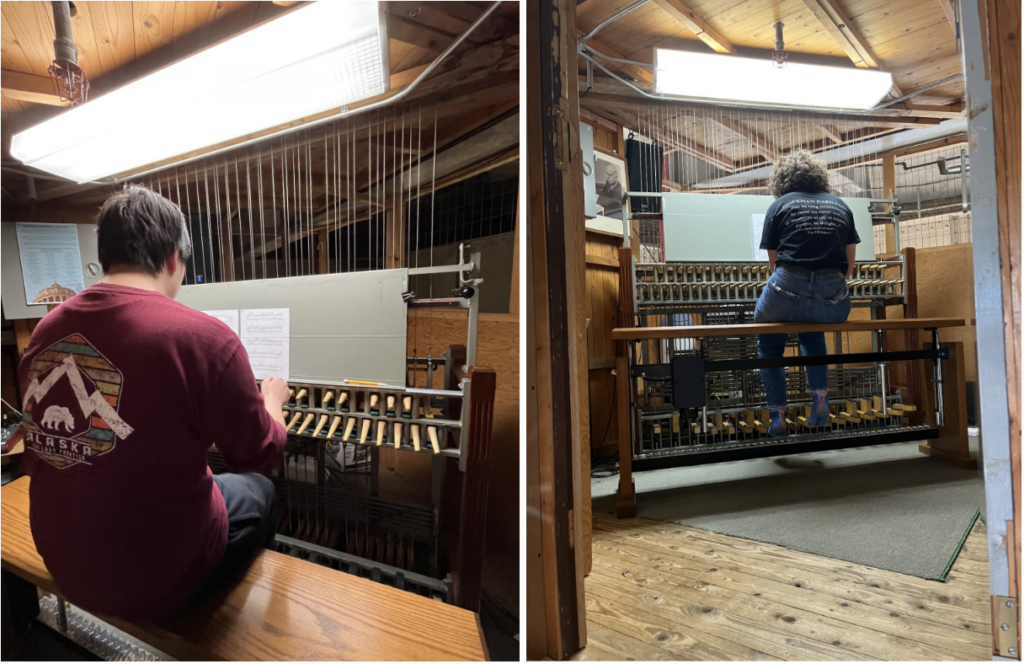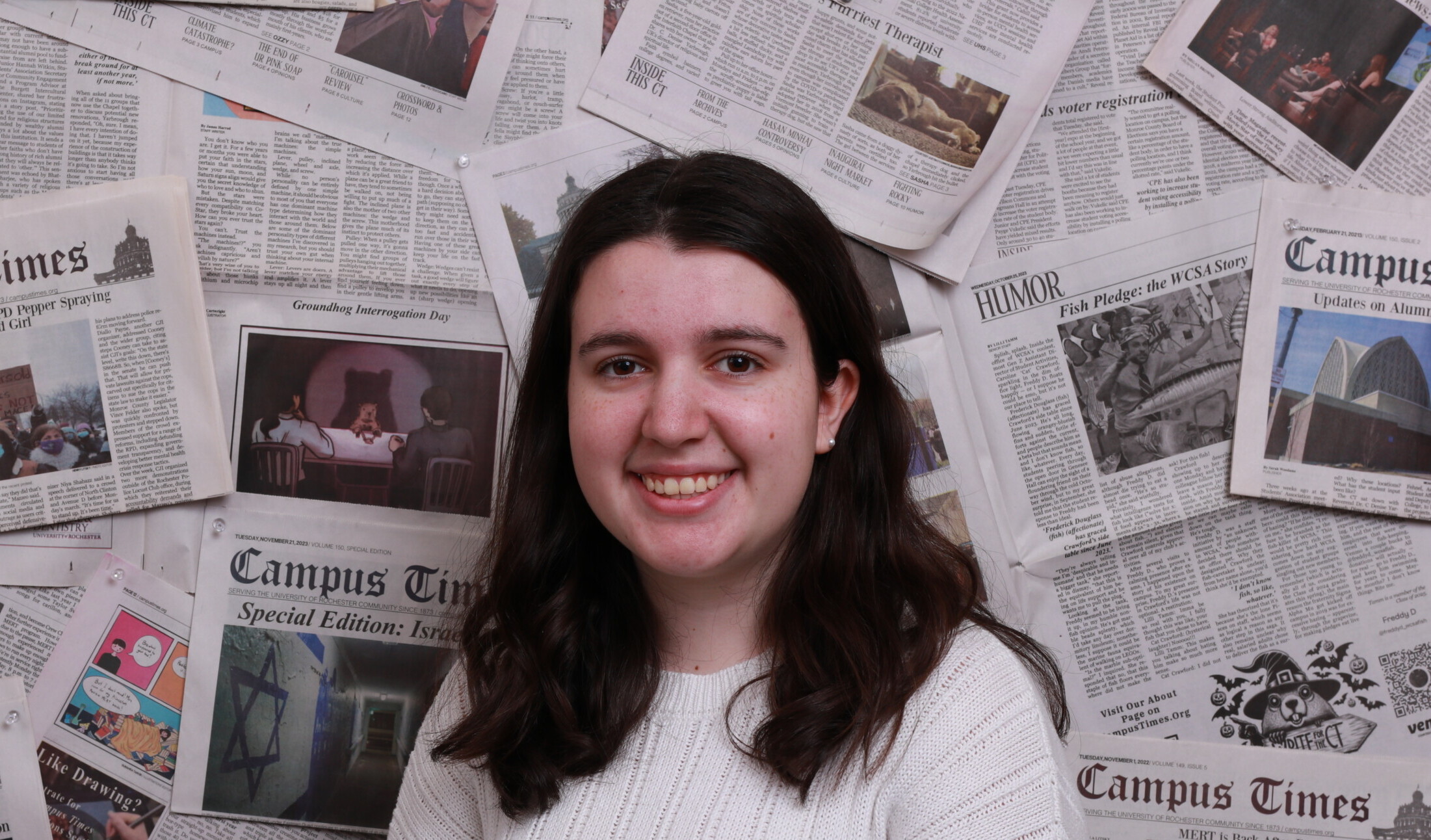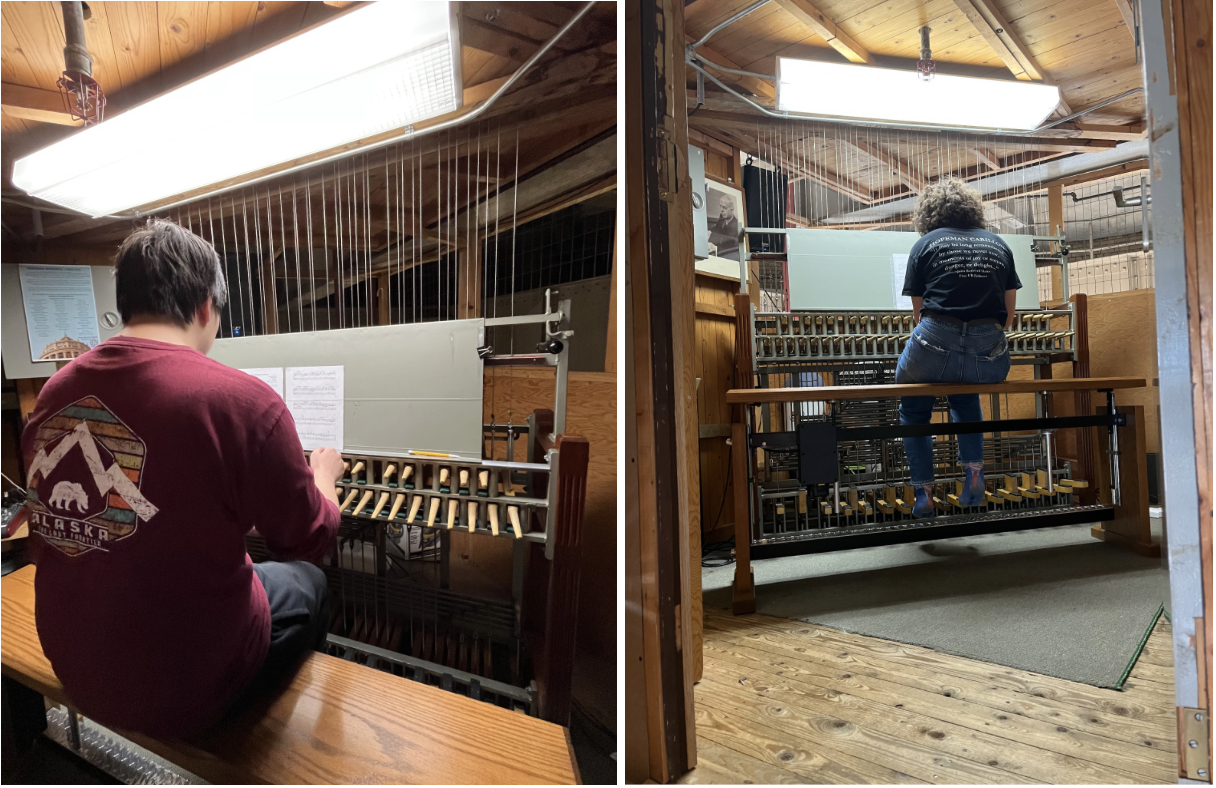The carillon is a part of every UR student’s daily life, but it plays a more important role for some. Each year, 12 students take part in a class where they learn how to play the Hopeman Memorial carillon located at the very top of Rush Rhees Library.
It’s easy to let the carillon’s sounds sit in the background, but with a closer listen, the music’s beauty shines through. A carillon consists of keys at the hand level, called batons, and pedals at the feet. Each is connected to a wire that, when pulled, causes a clapper to hit the inner wall of a bell. Both sections play notes, so playing the instrument requires a lot of coordination.
“It’s very difficult actually, there’s so much to think about. It’s like being a very athletic octopus,” said first-year Ella Powers. “There’s nuance to it.”
Most students have little to no experience playing the carillon before starting lessons. Experience with another instrument helps, but the only requirement to audition is being able to sight read treble and bass clef. The program holds auditions at the end of every semester which take place on the carillon itself. “The audition was pretty nerve wracking because it was like ‘oh, everyone can hear me,’” said sophomore Harvest Aquino.
More than just auditions, some practice happens on the instrument itself as well — but before a student can start playing, some setup has to be completed first.
“Whenever we come in the room, we always have to turn off the chime’s bells, because if you happen to hit a note at the same time the 5 o’clock bell goes off, it could cause damage,” said junior Darren King, who has been playing the carillon for two semesters.
The carillon makes sound through a clapper hitting the inside wall of the bells, but the automatic chimes come from hammers hitting the outside of the bells. If both were to happen at the same time, it would damage or possibly break the bells. After that, students must adjust the tightness of the wire linking the batons to the bells. Similar to tuning, if the wire isn’t tight enough then the bells will not ring as effectively.
Before practicing on the real instrument, students start by learning on practice ones. Donated by alumni, UR has two practice instruments located in Dewey and Spurrier, but open towers, the carillon practice version of office hours, are held on the real instrument.
The carillon was placed into the Rush Rhees bell tower in 1973, but the current program did not start until 2008. In the early 2000s, the carillon was not played at all. It took Eastman student Tiffany Ng ‘08 MM — who was already proficient in the carillon — to start teaching others in order for the carillon to become the part of campus life that it is today.
One of Ng’s students, Jeffrey Le ‘08, popularized the carillon by playing recognizable tunes for students to enjoy. He posted a video of the Harry Potter theme that has nearly 150 thousand views. When Ng and Le left the University, they asked current program director Doris Aman to take over. The Music department started a pilot program to see if students were interested in learning to play the instrument, and from there the class was born.
Now, students can choose from an enormous library of music to learn to play.
“[Aman] is really nice in that she lets us play whatever we want to play,” Aquino said. “We can also arrange our own pieces of music. Like last year I arranged some Taylor Swift songs for carillon, and I played them.”
Learning a new song starts on the practice instruments, and then moves into rehearsal at open towers until the piece is ready to perform. “Once you’ve prepared it for enough time, we do it for our weekly Sunday concerts, which are at 5 p.m.,” Aquino said.
Participation in carillon classes is limited to just a few students, but the annual Carillon Composition contest is available to anyone associated with the River Campus or Eastman. Whether students, faculty, or alumni, anyone is welcome to submit a carillon composition, meaning a new arrangement or original composition, for a chance to win a $500 prize. The final day to submit a composition is Jan. 30, and judging will occur in February.
Until then, the best way to be involved with the carillon is just to listen. Performance schedules and more details about the program are available on their Instagram @hopemancarillon, and those involved with the program appreciate every listener.
Carillon players sit isolated twelve floors above their audience, but, as Aman puts it, the bell only rings if they’re connected to the instrument, which is connected to the air, which is connected to people.
“We love our audience,” King said. “And we thank them for coming.”



